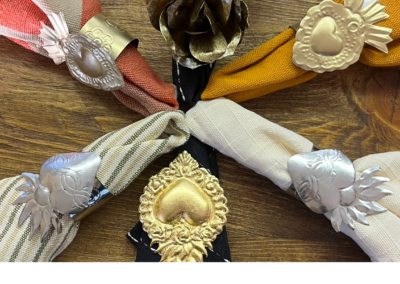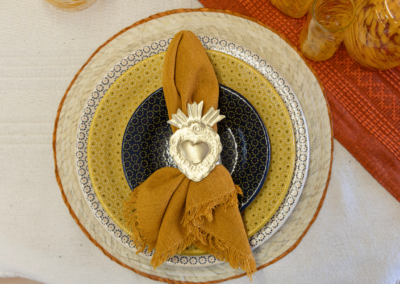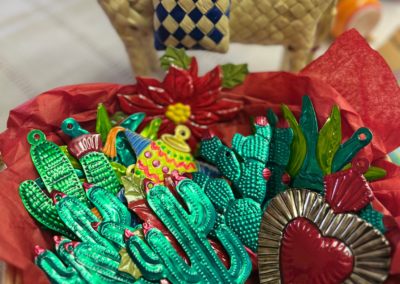Metal Art / Arte de Metal
Metal art in Mexico boasts a rich and diverse tradition, blending indigenous craftsmanship with European influences, particularly from Spanish colonial art. This fusion has resulted in a distinctive style that incorporates a wide range of techniques, materials, and cultural themes.
Forging and Hammering:
Traditional techniques like hand-forging, hammering, and chiseling remain central to Mexican metalworking. Skilled artisans create intricate designs by hand, often using tools passed down through generations, preserving both technique and cultural heritage.
Casting and Welding:
Modern methods, such as casting (often employing lost-wax techniques) and welding, are also integral to contemporary Mexican metal art. These techniques are especially used for larger sculptures or more modern pieces, allowing artists to push creative boundaries while still honoring traditional craftsmanship.
Hojalata:
Hojalata (or tinwork) is a classic Mexican craft that involves manipulating and decorating thin sheets of metal, typically tin or tin-coated material, to create both functional and decorative objects. Known for its aesthetic beauty and cultural significance, hojalata has become an emblematic form of Mexican folk art, blending vibrant colors, intricate patterns, and symbolic motifs.
No Results Found
The page you requested could not be found. Try refining your search, or use the navigation above to locate the post.




